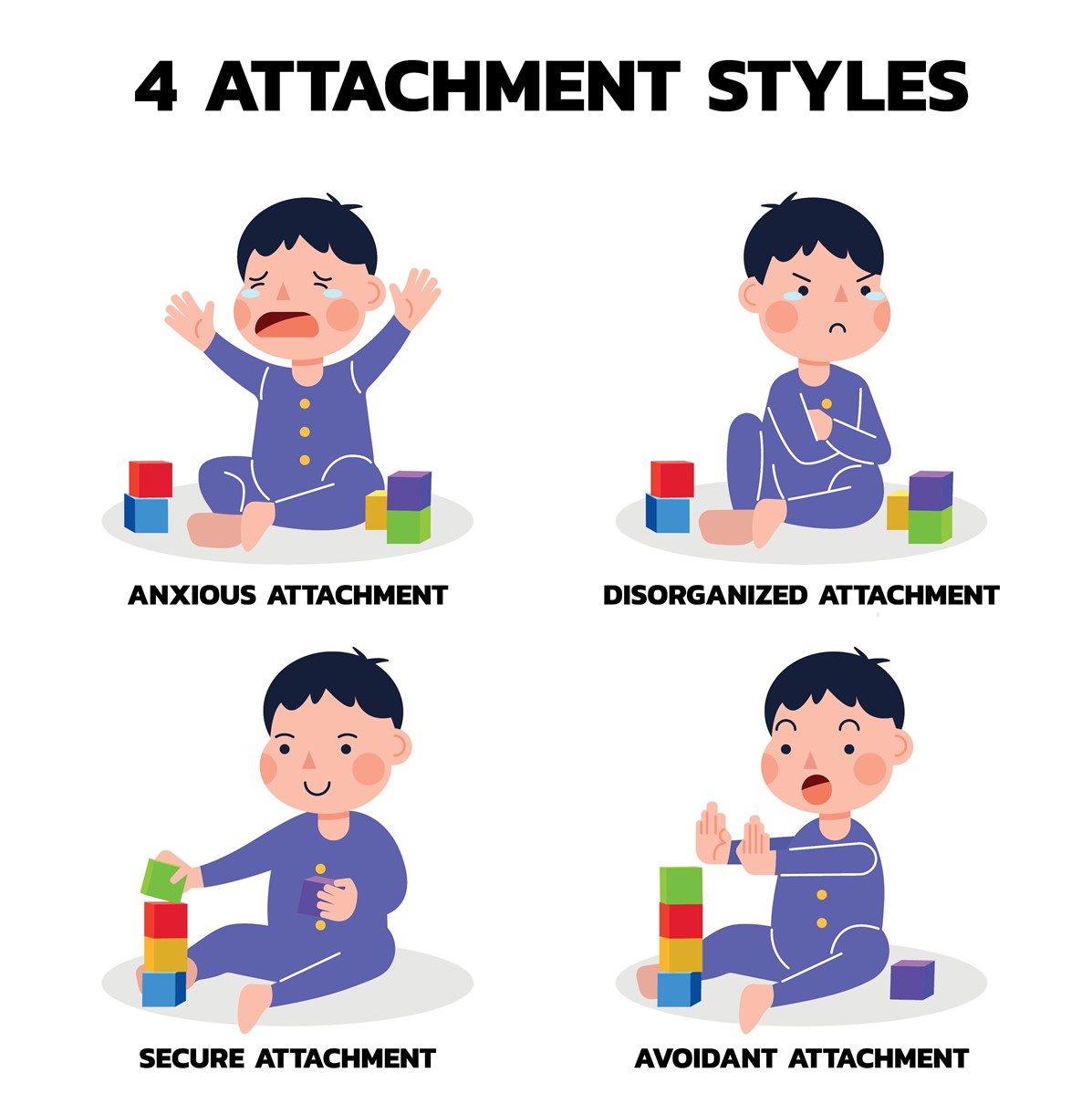Attachment Styles affects our relationships with significant people in our lives – family, and even peers. In this article, we uncover the origins of Attachment Styles, explore the theory and the four attachment styles and their impact on relationships. We also address the question: Can you change your attachment style? Attachment styles are developed early on in life. They affect the way we interact with others and impact our relationships. Identifying one’s attachment took roots from research done by John Bowlby, the founder of the theory.
Who founded the Attachment Theory?
John Bowlby, a British psychoanalyst, and psychiatrist formulated the Attachment Theory based on extensive research.
What are the Four Attachment Styles?
Four styles of attachment contribute to most human behavior when building relationships; Secure Attachment, Avoidant Attachment, Ambivalent Attachment, and Disorganized Attachment.
What do they look like and how do they affect relationships?
Secure Attachment— it is one of the four important attachment styles that can form in childhood and goes into our adult years. It’s a way of bonding with caregivers that typically results in a person having an great outlook about themselves, and a genuine sense of trust in others. Secure attachment is formed when caregivers, usually parents or close family members, attend to a child’s emotional and physical needs, adequately and consistently. They give comfort, security, and affection which makes the child feel supported and loved. This is important as the child grows because it creates a strong and healthy internal wiring that helps them build and maintain healthier relationships in teh future.
Children born in safe, loving, and responsive environments learn to regulate and feel control over their feelings when they are addressed consistently. They often gain a good sense of independence, a sense of security and confidence in their environment, and they feel competent to make decisions. This blueprint creates healthy, secure connections later in life in their personal and professional relationships.
And they make for incredible partners because someone with a secure attachment style provides predictability and are consistent which helps their partner feel secure and safe in the relationship.
And Avoidant Attachment , is created when caregivers don’t respond adequately and consistently to a child’s need for closeness and comfort. Caregivers may be emotionally distant, neglectful, or reject the feelings of the child. This lack of secure experiences leads to mistrust and unhealthy expectations in relationships later.
Developing an avoidant attachment style often leads to a person believing they must be independent and to do that, they can numb emotional connections. They generally shut down their emotions and refuse to be vulnerable because they feel the need to protect themselves. These individuals also learn how to self-soothe and regulate their emotions by numbing and distancing behaviors.
As a result, people with an avoidant attachment style tend to have difficulty establishing close, nurturing relationships as they feel uncomfortable with intimacy. They can be dismissive and stubborn in uncomfortable situations, and often reject and suppress their feelings which leaves their partner feeling left out in the cold.
Despite difficulty achieving intimacy, avoidant individuals maintain a high level of independence that portrays a confident work ethic, hyper focused on getting tasks at work done, and they can be appear emotional and engaged to people who don’t display strong emotions or need for attention.
An Ambivalent Attachment – these individuals hold on to relationships seeking affirmation and approval. It is an attachment style formed in childhood when caregivers are inconsistent with providing comfort and love. Children who develop this attachment style may feel anxious about being separated from caregivers and feel distressed when parents or caregivers leave even if briefly. They may become anxious. As a result of inconsistent care-taking, ambivalent attachment style people may have a drive of wanting closeness which is quickly followed by a fear of being abandoned when their is no consistency. The child may even act out in ways to get attentions, even if it’s negative reactions, as they feel it’s better than being alone.
Adults who exhibit an Ambivalent attachment show fear of being ‘abandoned’ by others. They may become clingy or needy when someone pulls away. They feel safe when the person comes back in and then back to worrying when that person creates some distance again. Ambivalent attachment are genarlly triggered by feeling of exaggerated insecurities, which are usually based on their thoughts and worries and very linked to early childhood inconsistencies.
Lastly, Disorganized Attachment, refers to an attachment style developed when someone experiences extremely difficult or traumatizing events in their early life, usually during their developmental period. As a result, they did not have a chance to establish a secure attachment style.
When a child is exposed to persistent trauma, anxiety, or even abuse in addition to a complete lack of stablity and consistently by their main caregivers, the child experiences disorganized attachment. People with disorganized attachments may exhibit unusual behavior patterns or acting out signals, inconsistent reactions like uncontrolled emotional responses, and may withdraw when they experience confrontation which makes it difficult to have healthy, stable relationships.
Can you change your attachment style?
Yes; although not an easy task, individuals can evolve and recreate attachments learned growing up in early family structures. Many committed to change can experiment with pushing through fears and insecurities. Remove, “no, i can’t or shouldn’t,” with, “I’m going to try.” When we change to a more secure attached we can have improved relationships and accelerate our personal growth
The gist of it:
Attachment Styles are crucial to how we connect in our interpersonal relationships. While they are formed in our childhood and we may not have had control then, being self-aware now of hoe we behave and feel in our relationships can help us change which will result in loving and healthier relationships filled with renewed optimism and hope.
If you found this post helpful, you might want to check out my podcast, “Heart of the Matter” for more on how you can understand and appreciate your partners attachment style and heal your own.






